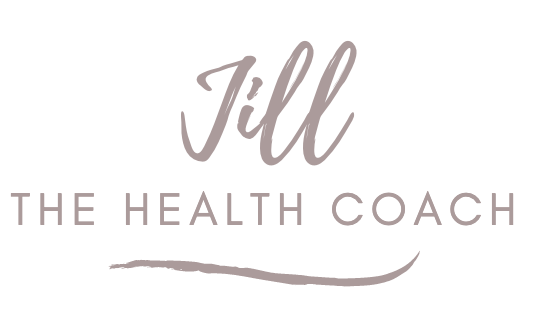Reposted from May 9, 2012
To eat organic or not to eat organic, that is the question. Perhaps the real question is what’s the difference and does it really matter?
The first thing you notice with organic food is that it may not be as supersized with perfect shapes or as colorful as conventional food. This is because there are no hormones to plump them up or artificial coloring that’s been injected. The most important thing you will notice when you take a bite is that there is more flavor and the taste is cleaner than conventionally grown food. My kids notice in particular that “our eggs” taste so much better than anywhere else. This is because organic food contains more vitamins, minerals and other micronutrients than conventionally grown food. In fact, The Journal of Agricultural and Food Chemistry shows research that organic vegetables have 50 – 60% higher levels of cancer fighting antioxidants than non-organic fruits and vegetables. Better taste and more nutrients—is this still worth paying a little extra?
Let’s examine further what defines organic and conventional. The word “organic” refers to the way farmers grow and process agricultural products, such as fruits, vegetables, grains, dairy products and meat. Organic farming practices are designed to encourage soil and water conservation and reduce pollution. Farmers who grow organic produce and meat don’t use conventional methods to fertilize, control weeds or prevent livestock disease. For example, rather than using chemical weed killers, organic farmers may conduct more sophisticated crop rotations and spread mulch or manure to keep weeds at bay.
Ultimately, conventional food is treated with chemicals, insecticides, herbicides, hormones, antibiotics and medications. These are on and/or in the food and you end up eating the chemicals as well. If they kill pests, disease and artificially spur growth, you can only imagine the havoc they wreak on your own system. In fact, these pesticides have been proven to weaken immune systems and promote the growth of free radicals, which cause cancer. Yes, caveat emptor and one big negative for buying conventional.
When shopping for your food, always look at the label. For produce, check the PLU code. If it is a 4-digit number that generally begins with a 3 or 4, it is conventionally grown. Organically grown produce PLU code has 5 digits with the first number always beginning with 9. Genetically modified produce (which I ALWAYS avoid) has 5 digits, which start with an 8. I will talk about the dangers of Genetically Modified Organisms in another article. Just don’t buy any produce starting with an 8 and always look for 9 for organic.
Also when looking at labels, the only way to absolutely know if a product is organic is to have the green USDA Organic label on it. This means that it is either 95% or 100% organic. Products that contain at least 70% organic ingredients may say, “made with organic ingredients. Otherwise, the product may not officially be organic. Yes, it can be tricky out there.
Also beware of products that say they are “natural” or “free-range” or “hormone free.” They are not organic. While they may be truth
ful, many are not. Only foods that are grown and processed according to USDA organic standards can be labeled organic.
While it can be difficult to find all organic, the following is the list of the Dirty Dozen. This list was developed by analysts at the Environmental Working Group (EWG) and is based on results of nearly 43,000 tests for pesticide residues. Yes, this is a legit list of produce that has the most pesticide residue in order of most contaminated. For this reason, you should always buy organic for produce on this list.
Peaches
Apples
Bell Peppers
Celery
Nectarines
Strawberries
Cherries
Pears
Grapes (Imported)
Spinach
Lettuce
Potatoes
Conversely, the following is the Cleanest 12 with the lowest levels of residue in order of least contaminated. I typically only buy organic broccoli on this list and don’t find it necessary to buy organic with the rest.
Onions
Avocados
Sweet Corn (frozen)
Pineapples
Mangoes
Asparagus
Sweet Peas (frozen)
Kiwis
Bananas
Cabbage
Broccoli
Papayas
For produce that you buy that is not organic, don’t fear. I always use a veggie wash which helps strip off some of the residue. I usually take a big metal bowl, fill with the produce in water and add some veggie wash in it and let it soak for 15 minutes or so. Then, I rinse well. It takes only a few minutes, but makes a huge difference. For other produce such as cucumbers, zucchini, apples, pears, etc, I always wash with hand soap and rinse well. Of course I use soap, which is free and clear of scent and chemicals such as 7th Generation. It works well when you need to wash and go quickly.
Remember, your most important investment for you and your families is what you put into your bodies to keep you running well. Just like your car, premium gas will make your car run better, have a longer life with less headaches. Better quality food works the same way for you. Paying a little more upfront can save lots in so many ways in the long run. That’s the real deal on investing in organic.
All material in this newsletter is provided for information only and may not be construed as medical advice or instruction. No action or inaction should be taken based solely on the contents of this publication;instead readers should consult appropriate health professionals on any matter relating to their health and well-being. The information provided has not been approved the Food & Drug Administration and is not intended to diagnose, treat, cure, or prevent any illness or disease.

